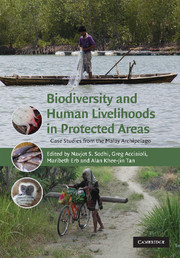Book contents
24 - Protected-area management in Indonesia and Malaysia: the challenge of divided competences between centre and periphery
from Part III - Legal and governance frameworks for conservation
Published online by Cambridge University Press: 12 November 2009
Summary
Overview
In countries worldwide, including in Asia, the management of protected areas and national parks can often be compromised by the uncertain demarcation of legal authority between central and local authorities, and among different sectoral agencies within each level of government. While central governments often claim the authority to gazette and establish protected areas, their effective management inevitably falls on autonomous provincial or state institutions where the areas actually lie. In carrying out their functions, local authorities may typically pursue policies and priorities that are at odds with those of the central government. At the same time, sectoral agencies in charge of associated activities such as forestry, mining, agriculture and settlement can also create pressures on adjoining protected areas. In practice, a proliferation of agencies at both the central and local levels can lead to coordination difficulties and power rivalries. Overlapping competences among institutions are thus common within, and between, levels of government.
In some countries, the central government may have authority over general policy issues such as biodiversity and international treaty commitments, but less over related issues in the field such as land use and natural-resource exploitation. This introduces the familiar problem of overlapping competences between central and local governments, with the typical result being coordination breakdowns and conflicting policies. For instance, the central government may have some legal authority over protected areas, but not the surrounding lands that are needed as buffer zones.
- Type
- Chapter
- Information
- Biodiversity and Human Livelihoods in Protected AreasCase Studies from the Malay Archipelago, pp. 353 - 383Publisher: Cambridge University PressPrint publication year: 2007



